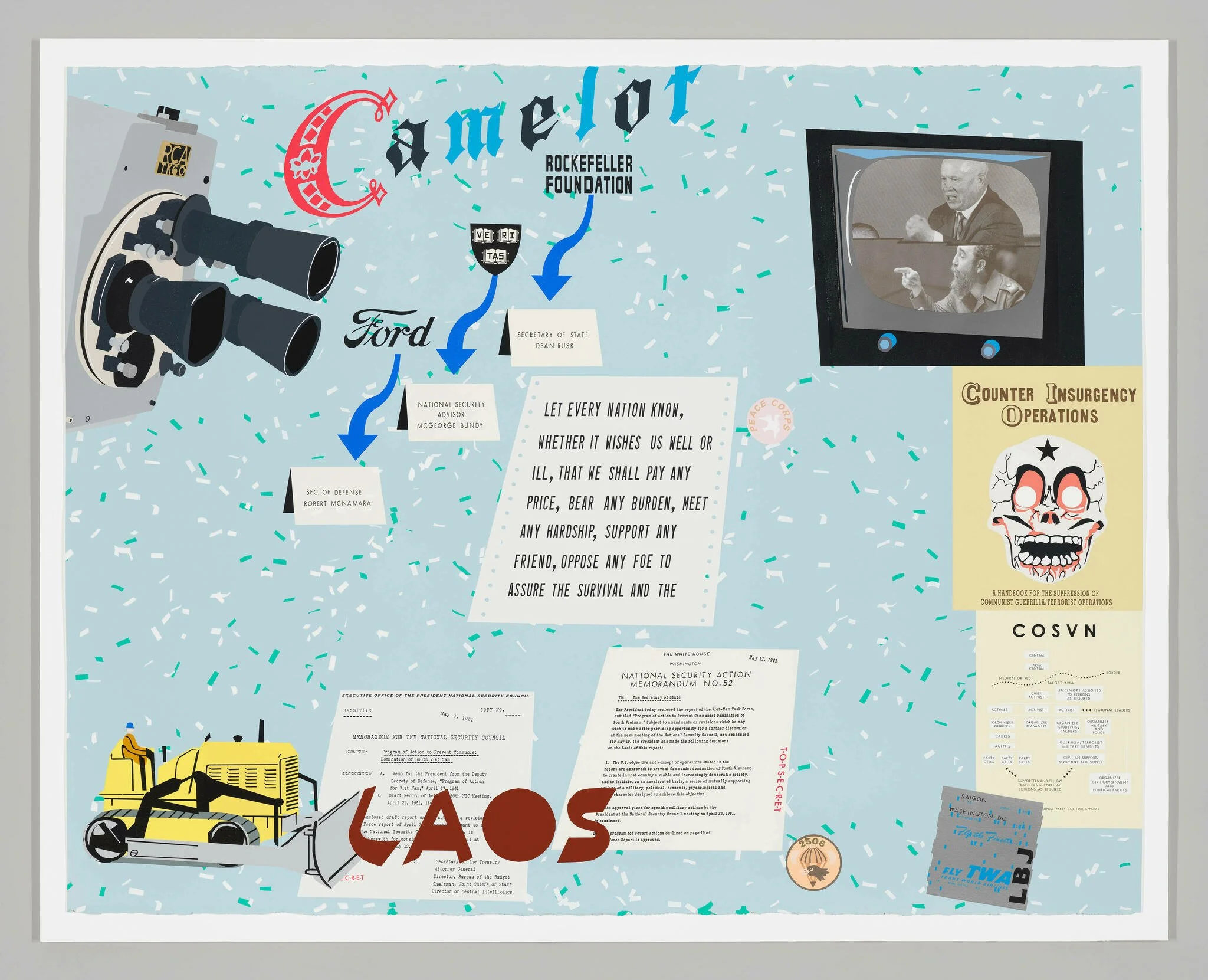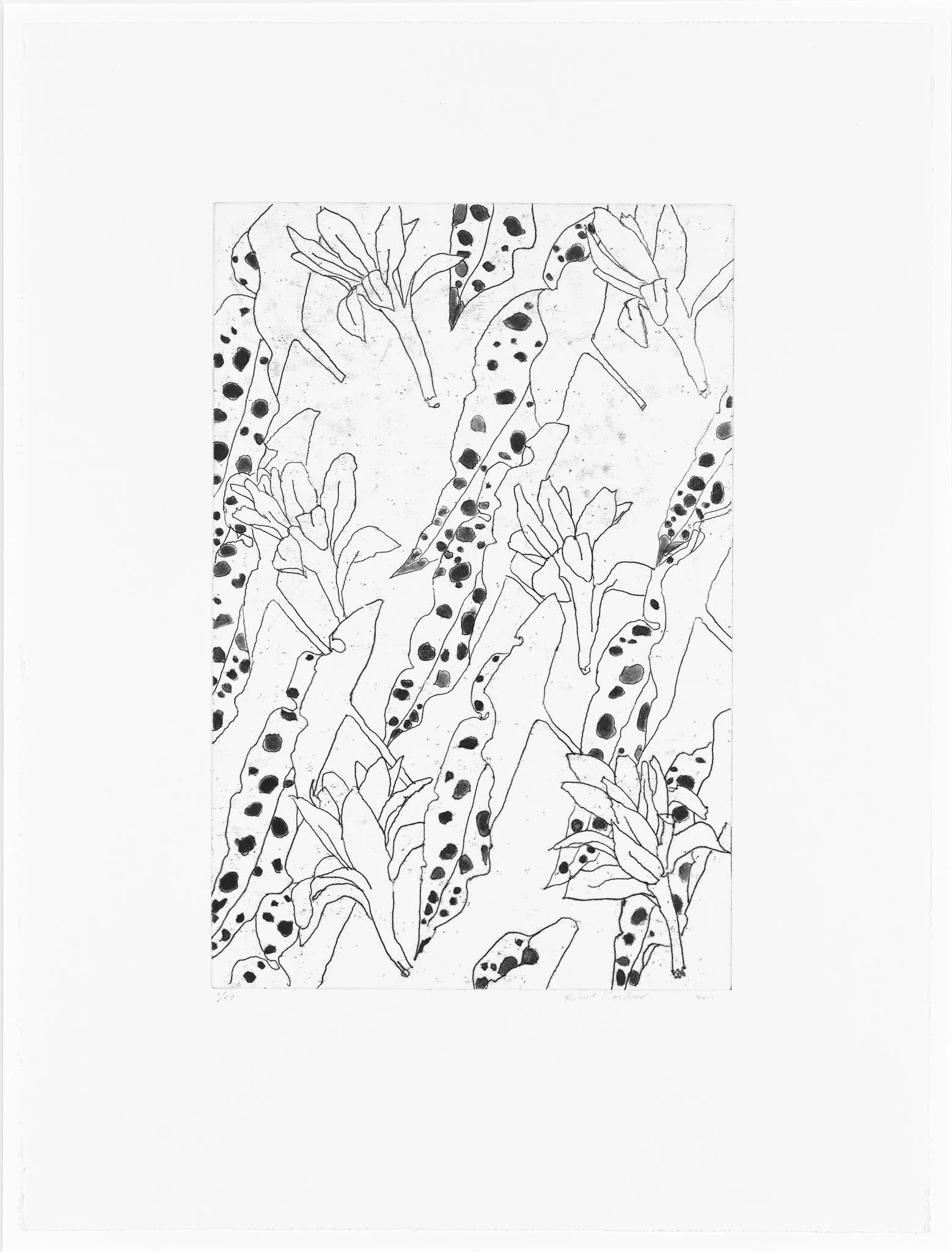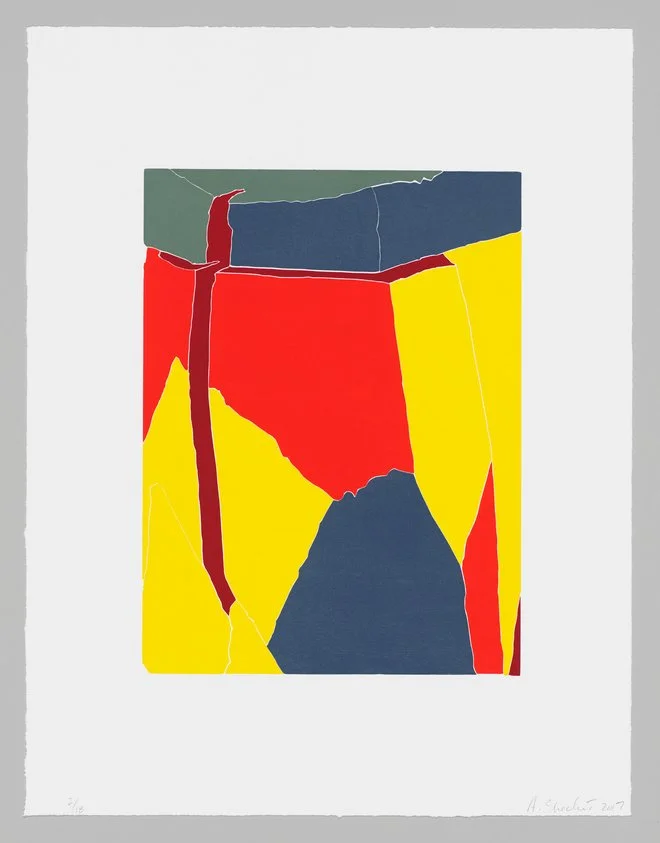03. Collecting Prints | Know Your Printmaking Processes
When you’re considering starting or adding to your print collection, it can be a much more enriching journey when you know a little more about the processes behind each of printing techniques. Here we’re sharing information about lithography, screenprint, intaglio and relief printing. Instructional videos from the Edinburgh Printmakers are shared to demonstrate each process (because who doesn't want dulcet Scottish tones explaining how things are made?) and credit also to Crown Point Press - their glossary page was very helpful in pulling this info together.
Roy Lichtenstein, Entablature VIII
1976. Screenprint with gold stamp embossing
Lithography:
The most common method of commercial printing (typically referred to as "offset lithography" in commercial contexts), also used for fine art printing. It is a method of printing based on the repelling tendencies of oil and water. The area that prints (the positive space) is created with oily material, and the non-printing area (the negative space) is differentiated by a chemical treatment that makes it receptive to water. Ink is rolled over the entire plate, which is sponged with water before each print. The oily ink sticks only to the positive areas that have been created by the oily material.
Stone Lithography demonstrated by Alastair Clark, Assistant Director at Edinburgh Printmakers.
Edward Ruscha, Untitled
1992, lithograph
Screen printing:
A stencil method of print making in which a design is imposed on a stretched screen of polyester with blank areas coated with an impermeable emulsion. Ink is forced into the mesh openings by a squeegee and transferred onto the printing surface (paper, fabric) during the squeegee stroke. As the screen rebounds away from the paper or textile the ink remains on its surface. It is also known as silk-screen, screen, serigraphy, and serigraph printing. One color is printed at a time, so several screens can be used to produce a multi-colored image or design.
Screenprinting demonstrated Gillian Murray, at Edinburgh Printmakers.
Matthew Brannon, Concerning Laos: Oval Office, May 1961
2018. Screenprint with hand-painted detail
Etching:
A type of "intaglio" print, a term that also includes engravings and dry point prints. In general, etching processes involve coating the plate with an acid-resistant ground, removing the ground in the image areas, then submerging the plate in a bath of diluted acid to create areas of differing depth that the ink can sit within.
You can easily spot an intaglio prints as they are the only process that embeds in a paper sheet and physically embosses it. You will see embossed plate edges clearly around the image area of an intaglio print; the image itself also is embossed.
Etching demonstrated Alfons Bytautas, at Edinburgh Printmakers.
Robert Kushner, Tuberose and Croton
2011. Etching
Relief:
Relief printing, the oldest print process, encompasses woodcut, linocut, hand-set type, rubber stamps, and related processes like potato prints. The plate or block is incised, but the ink is applied to the top surface rather than to the incisions as in intaglio. Intaglio plates can be printed in relief, and sometimes relief and intaglio inkings are combined.
Relief printing demonstrated Leena Nammari, at Edinburgh Printmakers.
Arlene Shechet, Significant Other: True
2017. Woodblock print





